 W
WKevin Ashton is a British technology pioneer who cofounded the Auto-ID Center at the Massachusetts Institute of Technology (MIT), which created a global standard system for RFID and other sensors. He is known for coining the term "the Internet of Things" to describe a system where the Internet is connected to the physical world via ubiquitous sensors.
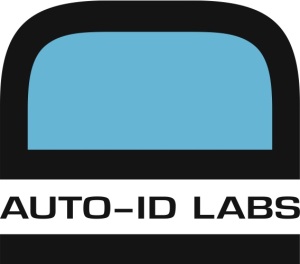 W
WThe Auto-ID Labs network is a research group in the field of networked radio-frequency identification (RFID) and emerging sensing technologies. The labs consist of seven research universities located on four different continents. These institutions were chosen by the former Auto-ID Center to design the architecture for the Internet of Things together with EPCglobal. The federation was established in 1999; the network they have developed is at the heart of a proposal sponsored by EPCglobal and supported by GS1, GS1 US, Wal-Mart, Hewlett-Packard, and others to use RFID and the Electronic Product Code (EPC) in the identification of items in the supply chain for companies. The areas of expertise range from hardware to software to business research related to RFID.
 W
WBag tags, also known as baggage tags, baggage checks or luggage tickets, have traditionally been used by bus, train, and airline carriers to route checked luggage to its final destination. The passenger stub is typically handed to the passenger or attached to the ticket envelope: to aid the passenger in identifying their bag among similar bags at the destination baggage carousel; as proof—still requested at a few airports—that the passenger is not removing someone else's bag from the baggage reclaim hall; and as a means for the passenger and carrier to identify and trace a specific bag that has gone astray and was not delivered at the destination. The carriers' liability is restricted to published tariffs and international agreements.
 W
WThe term "bin bug" was coined in August 2006 by the British media to refer to the use of Radio Frequency Identification (RFID) chips by some local councils to monitor the amount of domestic waste created by each household. The system works by having a unique RFID chip for each household's non-recycling wheelie bin. The chip is scanned by the dustbin lorry and, as it lifts the bin, records the weight of the contents. This is then stored in a central database that monitors the non-recycled waste output of each household.
 W
WA biometric passport is a traditional passport that has an embedded electronic microprocessor chip which contains biometric information that can be used to authenticate the identity of the passport holder. It uses contactless smart card technology, including a microprocessor chip and antenna embedded in the front or back cover, or centre page, of the passport. The passport's critical information is printed on the data page of the passport, repeated on the machine readable lines and stored in the chip. Public key infrastructure (PKI) is used to authenticate the data stored electronically in the passport chip, making it expensive and difficult to forge when all security mechanisms are fully and correctly implemented.
 W
WBroBizz is a Danish system for electronic toll collection. It was established in 2008 and BroBizz A/S develops and manages the concept. BroBizz A/S is 100% owned by Sund & Bælt Holding A/S.
 W
WCadi Scientific is a Singapore-based healthcare technology company that develops and markets wireless sensing and tracking devices base on active Radio-frequency identification (RFID) technology for healthcare institutions. Cadi Scientific is known in the Singapore Healthcare market for its Cadi SmartSense System that is designed for tracking patients' real-time locations for automating workflow as well as monitoring patients' temperatures automatically to reduce nurses' workload.
 W
WContactless payment systems are credit cards and debit cards, key fobs, smart cards, or other devices, including smartphones and other mobile devices, that use radio-frequency identification (RFID) or near field communication for making secure payments. The embedded integrated circuit chip and antenna enable consumers to wave their card, fob, or handheld device over a reader at the point of sale terminal. Contactless payments are made in close physical proximity, unlike other types of mobile payments which use broad-area cellular or WiFi networks and do not involve close physical proximity.
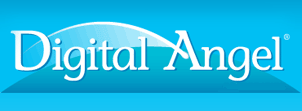 W
WDigital Angel, Corp. is a developer and publisher of consumer applications and mobile games designed for tablets, smartphones and other mobile devices, as well as a distributor of two-way communications equipment in the U.K.
 W
WDirection finding (DF), or radio direction finding (RDF), is – in accordance with International Telecommunication Union (ITU) – defined as radio location that uses the reception of radio waves to determine the direction in which a radio station or an object is located. This can refer to radio or other forms of wireless communication, including radar signals detection and monitoring (ELINT/ESM). By combining the direction information from two or more suitably spaced receivers, the source of a transmission may be located via triangulation. Radio direction finding is used in the navigation of ships and aircraft, to locate emergency transmitters for search and rescue, for tracking wildlife, and to locate illegal or interfering transmitters. RDF was important in combating German threats during both the World War II Battle of Britain and the long running Battle of the Atlantic. In the former, the Air Ministry also used RDF to locate its own fighter groups and vector them to detected German raids.
 W
WAn ear tag is a plastic or metal object used for identification of domestic livestock and other animals. If the ear tag uses Radio Frequency Identification Device (RFID) technology it is referred to as an electronic ear tag. Electronic ear tags conform to international standards ISO 11784 and ISO 11785 working at 134.2 kHz, as well as ISO/IEC 18000-6C operating in the UHF spectrum. There are other non-standard systems such as Destron working at 125 kHz. Although there are many shapes of ear tags, the main types in current use are as follows:Flag-shaped ear tag: two discs joined through the ear, one or both bearing a wide, flat plastic surface on which identification details are written or printed in large, easily legible script. Button-shaped ear tag: two discs joined through the ear. Plastic clip ear tag: a moulded plastic strip, folded over the edge of the ear and joined through it. Metal ear tag: an aluminium, steel or brass rectangle with sharp points, clipped over the edge of the ear, with the identification stamped into it. Electronic Identification Tags, include the EID number and sometimes a management number on the button that appears on the back of the ear. These can at times be combined as a matched set, which includes Visual tags with Electronic Identification Tags.
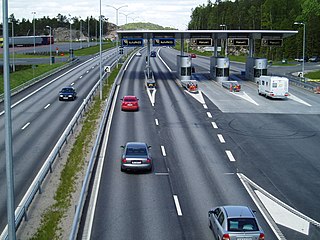 W
WEasyGo is a joint venture between Norway, Sweden, Denmark and Austria, that enables use of a single electronic toll tag on toll roads, ferries and bridges in all the member countries. The purpose of EasyGo is to enable the use of one OBE for payment when driving through any toll facility one might encounter on the way through Northern Europe and Austria.
 W
WThe Electronic Product Code (EPC) is designed as a universal identifier that provides a unique identity for every physical object anywhere in the world, for all time. The EPC structure is defined in the EPCglobal Tag Data Standard, which is an open standard freely available for download from the website of EPCglobal, Inc.. The canonical representation of an EPC is a URI, namely the 'pure-identity URI' representation that is intended for use when referring to a specific physical object in communications about EPCs among information systems and business application software.
 W
WElectronic toll collection (ETC) is a wireless system to automatically collect the usage fee or toll charged to vehicles using toll roads, HOV lanes, toll bridges, and toll tunnels. It is a faster alternative which is replacing toll booths, where vehicles must stop and the driver manually pays the toll with cash or a card. In most systems, vehicles using the system are equipped with an automated radio transponder device. When the vehicle passes a roadside toll reader device, a radio signal from the reader triggers the transponder, which transmits back an identifying number which registers the vehicle's use of the road, and an electronic payment system charges the user the toll. A major advantage is the driver does not have to stop, reducing traffic delays. Electronic tolling is cheaper than a staffed toll booth, reducing transaction costs for government or private road owners. The ease of varying the amount of the toll makes it easy to implement road congestion pricing, including for high-occupancy lanes, toll lanes that bypass congestion, and city-wide congestion charges. The payment system usually requires users to sign up in advance and load money into a declining-balance account, which is debited each time they pass a toll point.
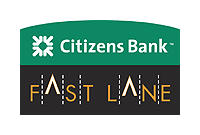 W
WFast Lane was the original branding for the electronic toll collection system used on toll roads in Massachusetts, including the Massachusetts Turnpike, Sumner Tunnel, Ted Williams Tunnel, and Tobin Bridge. It was introduced in 1998, and later folded into the E-ZPass branding in 2012. Fast Lane transponders were fully interoperable with member agencies of the E-ZPass Interagency Group, however Fast Lane transponders afford users discounted tolls in some junctions that out-of-state users are not offered.
 W
WiBeacon is a protocol developed by Apple and introduced at the Apple Worldwide Developers Conference in 2013. Various vendors have since made iBeacon-compatible hardware transmitters – typically called beacons – a class of Bluetooth Low Energy (BLE) devices that broadcast their identifier to nearby portable electronic devices. The technology enables smartphones, tablets and other devices to perform actions when in proximity to an iBeacon.
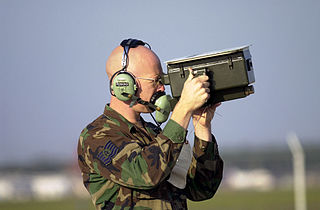 W
WIdentification, friend or foe (IFF) is a radar-based identification system designed for command and control. It uses a transponder that listens for an interrogation signal and then sends a response that identifies the broadcaster. It enables military and civilian air traffic control interrogation systems to identify aircraft, vehicles or forces as friendly and to determine their bearing and range from the interrogator. IFF may be used by both military and civilian aircraft. IFF was first developed during World War II, with the arrival of radar, and several friendly fire incidents.
 W
WAn immobiliser or immobilizer is an electronic security device fitted to a motor vehicle that prevents the engine from running unless the correct key is present. This prevents the vehicle from being "hot wired" after entry has been achieved and thus reduces motor vehicle theft. Research shows that the uniform application of immobilisers reduced the rate of car theft by 40%.
 W
WImpinj, Inc. is a manufacturer of radio-frequency identification (RFID) devices and software. The company was founded in 2000 and is headquartered in Seattle, Washington. The company was started based on the research done at the California Institute of Technology by Carver Mead and Chris Diorio. Impinj currently produces EPC Class 1, Gen 2 passive UHF RFID chips, RFID readers, RFID reader chips, and RFID antennas, and software applications for encoding chips, and gathering business intelligence on RFID systems.
 W
WA label printer is a computer printer that prints on self-adhesive label material and/or card-stock (tags). A label printer with built-in keyboard and display for stand-alone use is often called a label maker. Label printers are different from ordinary printers because they need to have special feed mechanisms to handle rolled stock, or tear sheet (fanfold) stock. Common connectivity for label printers include RS-232 serial, Universal Serial Bus (USB), parallel, Ethernet and various kinds of wireless. Label printers have a wide variety of applications, including supply chain management, retail price marking, packaging labels, blood and laboratory specimen marking, and fixed assets management.
 W
WLivestock branding is a technique for marking livestock so as to identify the owner. Originally, livestock branding only referred to hot branding large stock with a branding iron, though the term now includes alternative techniques. Other forms of livestock identification include freeze branding, inner lip or ear tattoos, earmarking, ear tagging, and radio-frequency identification (RFID), which is tagging with a microchip implant. The semi-permanent paint markings used to identify sheep are called a paint or color brand. In the American West, branding evolved into a complex marking system still in use today.
 W
WA magnetic stripe card is a type of card capable of storing data by modifying the magnetism of tiny iron-based magnetic particles on a band of magnetic material on the card. The magnetic stripe, sometimes called swipe card or magstripe, is read by swiping past a magnetic reading head. Magnetic stripe cards are commonly used in credit cards, identity cards, and transportation tickets. They may also contain an RFID tag, a transponder device and/or a microchip mostly used for business premises access control or electronic payment.
 W
WA microchip implant is an identifying integrated circuit placed under the skin of an animal. The chip, about the size of a large grain of rice, uses passive radio-frequency identification (RFID) technology, and is also known as a PIT tag. Standard pet microchips are typically 11–13 mm long and 2 mm in diameter.
 W
WA human microchip implant is any electronic device used to implant subcutaneous (subdermal). Examples include an identifying integrated circuit RFID device encased in silicate glass which is used to implant in the body of a human being. This type of subdermal implant usually contains a unique ID number that can be linked to information contained in an external database, such as personal identification, law enforcement, medical history, medications, allergies, and contact information.
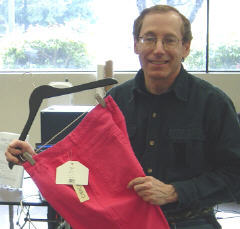 W
WPaul A. Moskowitz works at the IBM Thomas J. Watson Research Center in New York. Moskowitz is a graduate of Stuyvesant High School in New York City, received a Ph.D. in physics at New York University, and has held research and teaching positions at the Université Grenoble, Johannes Gutenberg-Universität Mainz, and at the University of Colorado Boulder. His early work in the area of nuclear physics resulted in the publication of the Moskowitz-Lombardi rule.
 W
WThe Swedish national identity card is a non-compulsory biometric identity document issued in Sweden. It is one of two official identity documents issued by the Swedish Police, the other being the Swedish passport. It is only issued to Swedish citizens, and indicates the citizenship.
 W
WThe Norwegian identity card, commonly referred to as the national identity card in Norway, is a non-compulsory biometric identity document issued since 30 November 2020. It is one of two official identity documents issued by the Norwegian Police Service, the other being the Norwegian passport. It is only issued to Norwegian citizens, and may indicate citizenship so that it can be used as a travel document facilitating freedom of movement in EFTA and the European Economic Area. For travel within the Nordic countries no identity documentation is legally required for Nordic citizens due to the Nordic Passport Union.
 W
WThe Open Rights Group (ORG) is a UK-based organisation that works to preserve digital rights and freedoms by campaigning on digital rights issues and by fostering a community of grassroots activists. It campaigns on numerous issues including mass surveillance, internet filtering and censorship, and intellectual property rights.
 W
WOpen road tolling (ORT), also called all-electronic tolling, cashless tolling, or free-flow tolling, is the collection of tolls on toll roads without the use of toll booths. An electronic toll collection system is usually used instead. The major advantage to ORT is that users are able to drive through the toll plaza at highway speeds without having to slow down to pay the toll. In some installations, ORT may also reduce congestion at the plazas by allowing more vehicles per hour/per lane. The disadvantage to ORT is the possibility of "leakage"; that is, "violators" who do not pay. Leakage may either be written off as an expense by the toll operator, or offset in part or whole by fees and fines collected against the violators.
 W
WPalmetto Pass is an electronic toll-collection system used on all toll roads in South Carolina. It was originally administered by the South Carolina Department of Transportation and is now operated by the Connector 2000 Association, which operates the Southern Connector.
 W
WA Pocket PC is a class of personal digital assistant (PDA) that runs the Windows Mobile or Windows Embedded Compact operating system that has some of the abilities of modern desktop PCs. The name was introduced by Microsoft in 2000 as a rebranding of the Palm-size PC category. Some of these devices also had integrated phone and data capabilities, which were called Pocket PC Phone Edition or simply "Smartphone".
 W
WJosef Preishuber-Pflügl is an Austrian technology leader.
 W
WRohde & Schwarz Federal Systems, Inc. is a U.S. company set up to distribute Rohde & Schwarz products and services for U.S. government and contractor customers. Rohde & Schwarz Federal Systems is organized as an SSA company.
 W
WSanjay E. Sarma is the Fred Fort Flowers (1941) and Daniel Fort Flowers (1941) professor of mechanical engineering and the Vice President for Open Learning at Massachusetts Institute of Technology. He is credited with developing many standards and technologies in the commercial RFID industry. Sarma is co-author of The Inversion Factor: How to Thrive in the IOT Economy, along with Linda Bernardi and the late Kenneth Traub. Sarma also serves on the board of the MOOC provider edX as a representative of MIT.
 W
WSavi Technology was founded in 1989 and is based in Alexandria, Virginia.
 W
WThe Secure Electronic Network for Travelers Rapid Inspection (SENTRI) provides expedited U.S. Customs and Border Protection (CBP) processing, at the U.S.-Mexico border, of pre-approved travelers considered low-risk. Voluntarily applicants must undergo a thorough background check against criminal, customs, immigration, law enforcement, and terrorist databases; a 10-fingerprint law enforcement check; and a personal interview with a CBP Officer. The total enrollment fee is $122.50, and SENTRI status is valid for 5 years.
 W
WSolitude Mountain Resort is a ski resort located in the Big Cottonwood Canyon of the Wasatch Mountains, thirty miles southeast of Salt Lake City, Utah. With 66 trails, 1,200 acres (4.9 km2) and 2,047 feet (624 m) vertical, Solitude is one of the smaller ski resorts near Salt Lake City, along with its neighbor Brighton. It is a family-oriented mountain, with a wider range of beginner and intermediate slopes than other nearby ski resorts; 50% of its slopes are graded "beginner" or "intermediate," the highest such ratio in the Salt Lake City area. Solitude was one of the first major US resorts to adopt an RFID lift ticket system, allowing lift lines to move more efficiently. It was followed by Alta Ski Area in 2007. Solitude is adjacent to Brighton Ski Resort near the top of Big Cottonwood Canyon. Solitude and Brighton offer a common "Solbright Pass" which provides access to both resorts for a nominal surcharge.
 W
WParameters Speedpass is a keychain radio-frequency identification (RFID) device introduced in 1997 by Mobil for electronic payment. It was originally developed by Verifone. As of 2004, more than seven million people possess Speedpass tags, which can be used at approximately 10,000 Exxon, Mobil and Esso gas stations worldwide.
 W
WA stored-value card (SVC) is a payment card with a monetary value stored on the card itself, not in an external account maintained by a financial institution. This means no network access is required by the payment collection terminals as funds can be withdrawn and deposited straight from the card. Like cash, payment cards can be used anonymously as the person holding the card can use the funds. They are an electronic development of token coins and are typically used in low-value payment systems or where network access is difficult or expensive to implement, such as parking machines, public transport systems, closed payment systems in locations such as ships or within companies.
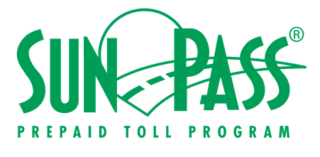 W
WSunPass is an electronic toll collection system within the U.S. state of Florida. It was created by the Florida Department of Transportation's Office of Toll Operations, now a division of Florida's Turnpike, in 1999. The system utilizes windshield-mounted RFID transponders manufactured by TransCore and lane equipment designed by companies including TransCore, SAIC, and Raytheon. SunPass is fully interoperable with E-Pass, O-Pass, LeeWay and the Miami-Dade Expressway Authority (MDX) toll roads.
 W
WA supply-chain network (SCN) is an evolution of the basic supply chain. Due to rapid technological advancement, organisations with a basic supply chain can develop this chain into a more complex structure involving a higher level of interdependence and connectivity between more organisations, this constitutes a supply-chain network.
 W
WSybase iAnywhere, is a subsidiary of Sybase specializing in mobile computing, management and security and enterprise database software. SQL Anywhere, formerly known as SQL Anywhere Studio or Adaptive Server Anywhere (ASA), is the company's flagship relational database management system (RDBMS). SQL Anywhere powers popular applications such as Intuit, Inc.'s QuickBooks, and the devices of 140,000 census workers during the 2010 United States Census. The product's customers include Brinks, Kodak, Pepsi Bottling Group (PBG), MICROS Systems, Inc. and the United States Navy. In August 2008.
 W
WTestament was an American comic book series written by Douglas Rushkoff with art and covers by Liam Sharp. It was published from February 2006 to March 2008 under DC Comics' Vertigo imprint.
 W
WTouch Memory is an electronic identification device packaged in a coin-shaped stainless steel container. Touch memory is accessed when a touch probe comes into contact with a memory button.
 W
WIn telecommunication, a transponder is a device that, upon receiving a signal, emits a different signal in response. The term is a portmanteau of transmitter and responder. It is variously abbreviated as XPDR, XPNDR, TPDR or TP.
 W
WTransponder timing is a technique for measuring performance in sport events. A transponder working on a radio-frequency identification (RFID) basis is attached to the athlete and emits a unique code that is detected by radio receivers located at the strategic points in an event.
 W
WA U-Key is an implementation of the MIFARE RFID chip, encased in a plastic key style housing. It is used as a prepayment system on vending machines and for some self-service diving air compressors in Switzerland
 W
WThe United States passport card is a identity card and a limited travel document issued by the United States federal government in the size of a credit card. Like a U.S. passport book, the passport card is only issued to U.S. nationals exclusively by the U.S. Department of State, compliant to the standards for identity documents set by the REAL ID Act, and can be used as proof of U.S. citizenship and identity. The passport card allows its holders to travel by domestic air flights within the United States, and to travel by land and sea within North America. However, the passport card cannot be used for international air travel.
 W
WVerisign Inc. is an American company based in Reston, Virginia, United States that operates a diverse array of network infrastructure, including two of the Internet's thirteen root nameservers, the authoritative registry for the .com, .net, and .name generic top-level domains and the .cc and .tv country-code top-level domains, and the back-end systems for the .jobs, .gov, and .edu top-level domains. Verisign also offers a range of security services, including managed DNS, distributed denial-of-service (DDoS) attack mitigation and cyber-threat reporting.
 W
WVideo tolling is a form of electronic toll collection, which uses video or still images of a vehicle's license plate to identify a vehicle liable to pay a road toll. The system dispenses with collection of road tolls using road-side cash or payment card methods, and may be used in conjunction with "all electronic" open road tolling, to permit drivers without an RFID device to use the toll road.